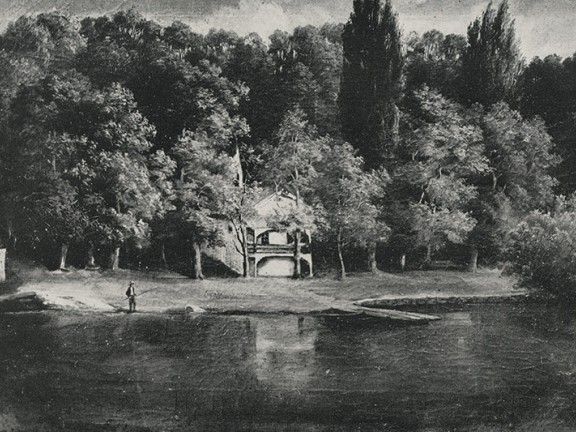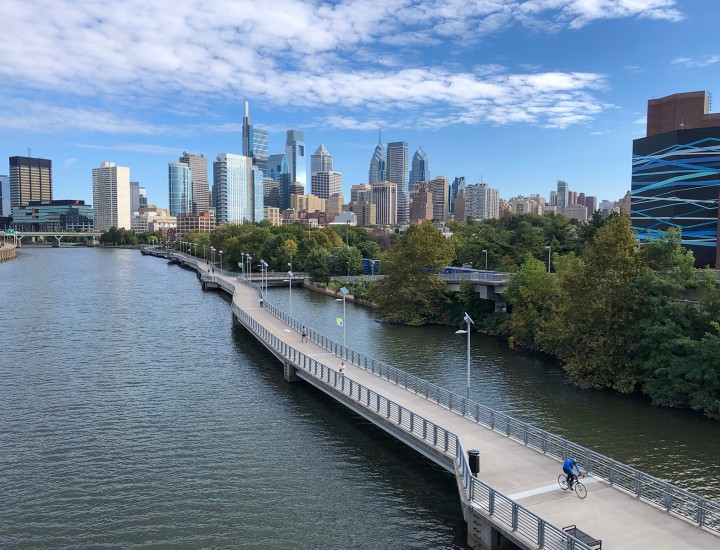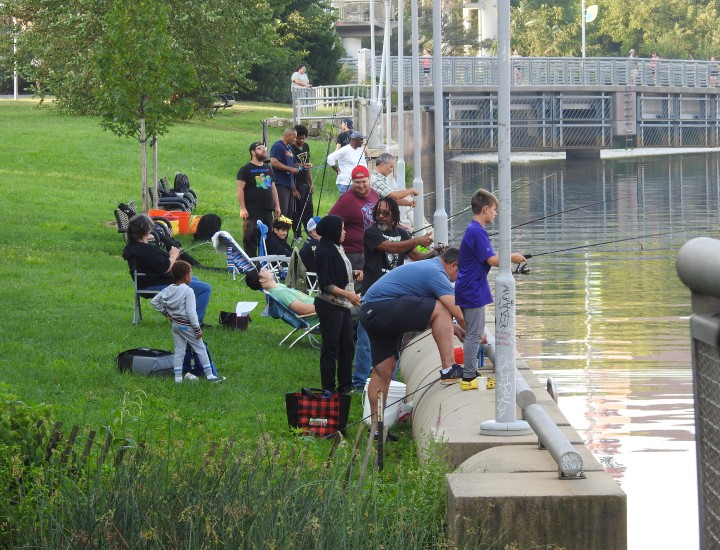Fishing the tidal Schuylkill

The lower portion of the Schuylkill River that flows through Philadelphia was once a pristine space with plenty of plants and wildlife. Fish were so plentiful that the State in Schuylkill – the first and oldest angling club in the United States - set up its clubhouse along the Schuylkill River near what is now Girard Avenue in 1732. When the Fairmount Dam was constructed in 1822, the club moved its clubhouse to Rambo’s Rock on the east side of the tidal Schuylkill, just south of present-day Grays Ferry Crescent. Club anglers and others were drawn to the Schuylkill for the abundance of American shad, among many other prevalent fish species.
As Philadelphia’s population and its industry grew, so did the amount of trash, chemicals, coal residue and other industrial waste produced by its residents and businesses. Large sewers, such as the Mill Creek Sewer in Southwest Philadelphia and others that redirected sewage lines from neighborhoods north of the Fairmount Dam to just below the dam, brought waste and pollution from the city into the river. By the 1920s, all of this pollution caused bacteria levels to rise and oxygen levels to drop in the Schuylkill, until the river was no longer able to support aquatic life. Dive deeper into the history of the lower Schuylkill with John Frederick Lewis's 1924 detailed account, The Redemption of the Lower Schuylkill: The River As It Was, The River As It Is, The River As It Should Be.
Thanks to the Clean Water Act of 1972, municipalities and industrial companies were required to upgrade their wastewater treatment plants. These new water quality standards coupled with watershed education programs and other cleanup measures have greatly reduced the amount of pollution entering into the Schuylkill. According to a 2019 State of the Basin Report for the Delaware Estuary and Basin completed by the Partnership for the Delaware Estuary, oxygen levels in the Delaware Estuary – which is where the lower Schuylkill gets its tidal waters – have been above their criteria level since the late 1990s. The criteria level is the Delaware River Basin Commission’s water quality standard for dissolved oxygen. Check out the chart below to see how much the dissolved oxygen levels have risen over the past five decades and get the entire report here.

With oxygen levels on the rise, many fish species, as well as some crustaceans and mammals, have returned to the tidal Schuylkill. The most commonly seen species in this stretch of the river are channel catfish, white perch, smallmouth bass, northern snakehead (invasive), common carp, American eel, largemouth bass, white catfish, flathead catfish, striped bass, walleye, and bluegill. If you are lucky, you may even see an otter or dolphin making its way upriver! And, American shad are once again migrating up the Schuylkill to spawn, which also points to improved ecological conditions.
You can get an up close and personal look at the fish in the tidal Schuylkill by participating in catch-and-release fishing events, such as the Philadelphia Water Department's annual Philly FUN Fishing Fest (pictured below).
There is still plenty of work to be done to clean up the river and keep it clean, not just for aquatic species, but also for the thousands of Philadelphians who get their drinking water from the Schuylkill. With that in mind, the Philadelphia Water Department has been repopulating the Schuylkill with a native, fresh water mussel species since 2016. One fresh water mussel can filter 10 to 20 gallons of water a day! Another fresh water mussel hatchery is planned for Bartram’s Garden, with the expectation that it will release up to 500,000 mussels into the river and its tributaries every year. Learn more about the mighty mussel and how it helps keep the Schuylkill clean here. And, learn how you can help keep the Schuylkill clean here.


